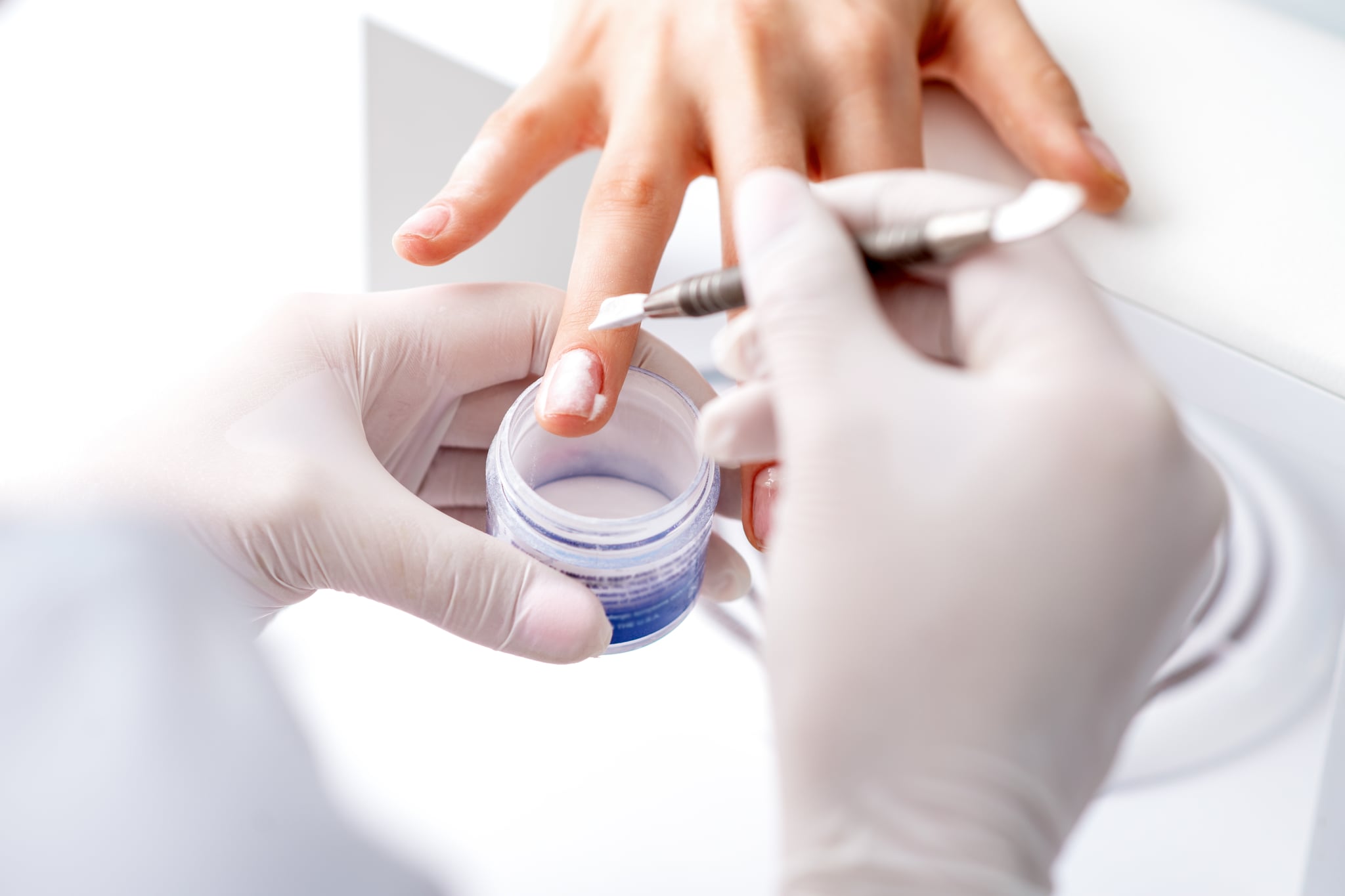The Pros and Cons of a Dip Powder Manicure

- Dip powder nails have grown in popularity over the last few years.
- The process involves pigmented powder and results can last up to a month.
- We’re breaking down all the pros and cons of dip nails.
Within the last two decades, gel and acrylic manicures have been rising in popularity because they can last up to two weeks. But there is another method worth knowing about before going to the salon: dip powdered manicures. Although dip powders seem like a new trend, the technique has been around since the 1980s.
The process of getting a dip manicure — or DYIng it at home — is different than other manicures you’ve experienced. Unlike gel, which requires UV rays to cement the polish, or acrylic, dipped manicures use pigmented powder. First, a base coat and a sealant is applied from a small container of the color you’ve selected. A nail technician will then paint on both coats, shaping it to the contours of your nail. Some brands claim that the products are “healthy” for the nail, as there are vitamins within the formulas. The manicure can sometimes last up to a month, but just how healthy is it?
Here, we’re breaking down all your biggest questions — including whether dip powder is bad for your nails and if it’s worth trying.
https://www.instagram.com/p/CL9_DLnHEdy/
Is Dip Powder Bad For Your Nails?
The answer to this question boils down to how your dip nails are done. The first thing to watch out for is the method by which the powder is applied. Some nail technicians will dip your nails directly into the container — this is how the manicure earned its name — versus painting the pigment on with a brush. This is unsanitary because of germs that can be picked up on the nail from dipping it into the bottle. If you choose to get this manicure done, make sure your technician is actually painting on the base, pigment, and sealant coats, not dipping.
Rita Pinto, founder of the popular luxury nail salon Vanity Projects, which combines high-end nail art and video program, refuses to do dip powder manicures because of these sanitation risks.
Cons of a Dip Manicure
Again, the sanitation part of the manicure process is a con for many nail artists and experts, but there are a few other things to also keep in mind. “Dip powders are temporarily damaging to the nails as the seal layer of your nails is broken in the process of this type of manicure,” says Josephine Allen, a nail technician a Samuel Shriqui Salon, which also boasts being Essie’s flagship store. “Dip powders also tend to temporally dehydrate the nails.”
Pros of a Dip Manicure
If you’re already addicted to dip manicures, don’t fret: there are no long-term effects. While Allen says that the dip powders aren’t necessarily healthier than other types of manicures, the products are not permanently damaging. “The root of the nails will not be damaged in the process and a new layer of nail will continue to grow,” she says.
If you do choose to get one, Allen recommends using paper wraps. “A manicure involving paper wrapping the free edge of the nails can last up to two weeks,” she says. “This manicure is healthier for the nails and it won’t be roughened in the process.”
Another thing to keep in mind is that dip powders are not that far off from acrylic and gel. Because dip powders are made up of grains of pigment, they have more intense colors. This is different from acrylic nails that involve a liquid and a powder that bond to form a gel. Like acrylics, gel manicures are also a liquid that hardens when it comes into contact with a UV light. And with dip powders, a manicurist will use a glue that contains cyanoacrylate (think Krazy Glue, but for your nails) to get it to stick on the nail.
As with gel and acrylic manicures, the removal process with a dip powder manicure is essential to avoiding long-term damage. Generally all three types of manicures will require that you soak off the product, which can sometimes be time-consuming, but don’t rush it. Patience is key, so you don’t damage the top layer of your nails.
Source: Read Full Article
